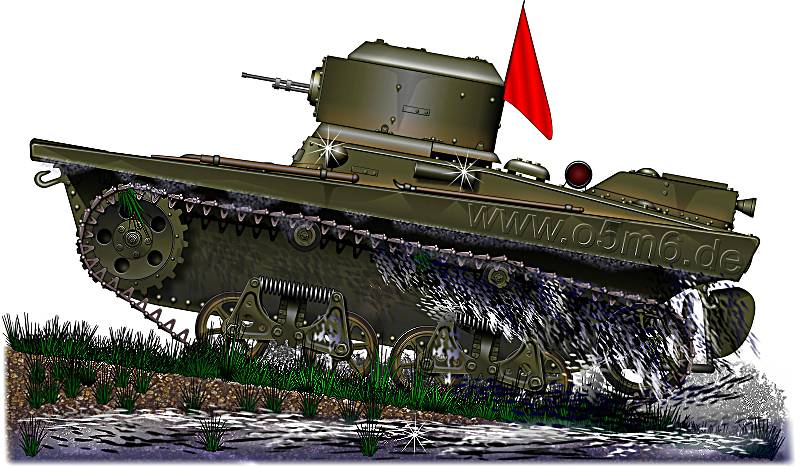
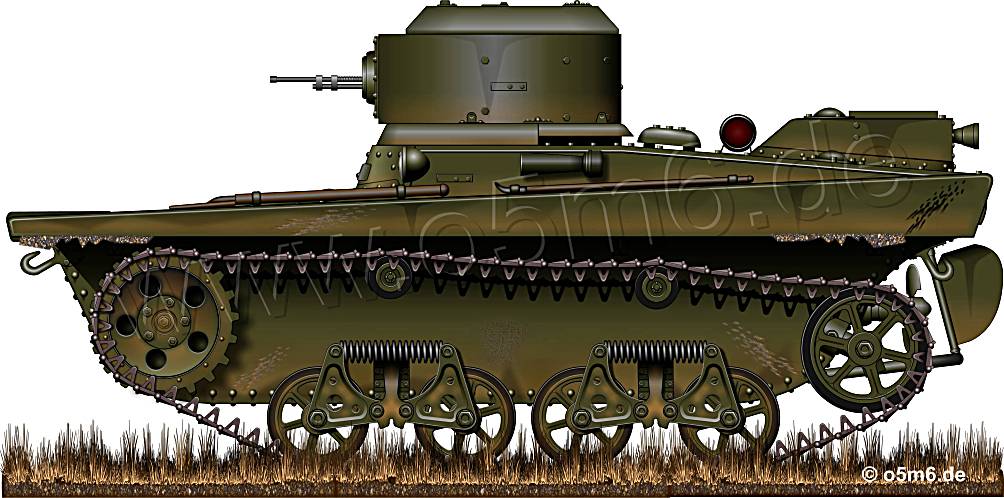
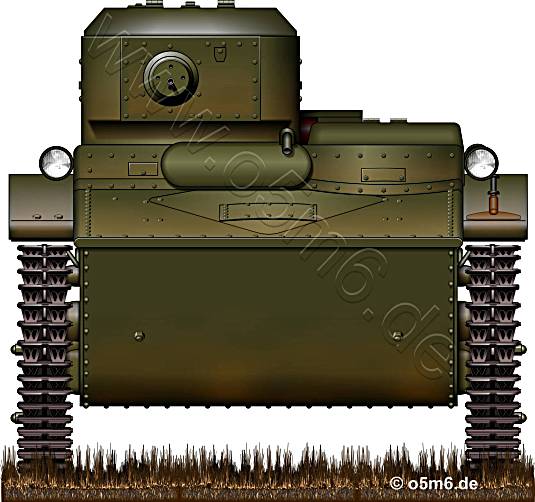
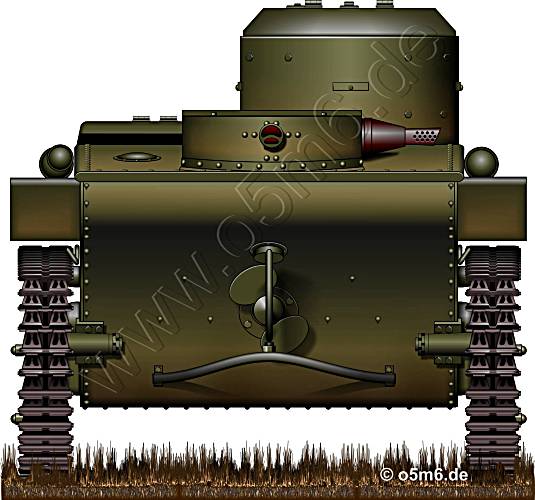
In 1930 they purchased from Britain eight Vickers Carden-Lloyd Model 1931 amphibious light tanks.
The Model 1931 amphibious tanks provided the starting point, but the Russian designers incorporated a GAZ-AA engine and suspension derived from the Renault AMR to yield their own vehicle.
The resultant vehicle was accepted for service in August 1933 as the T-37 and production begun at the Moscow Zavod No.37.
Later, a special unit was organized in the Leningrad MD under A. Zhukov to push seven T-37s through a gruelling trial : In eleven days, the tanks travelled no less than 700 kilometres, 600 of them in water.
Although the trials reinforced the RKKA's commitment to amphibious tanks for the scouting role, serious technical deficiencies had to be corrected before quantity production ensued.
The improved series-production type was called the T-37A.
A total of approximately 1,200 T-37As were manufactured between 1933 and 1936.
They served in a reconnaissance role with tank, mechanized and cavalry units in all Red Army operations up to 1942.
T -37A were in service at airborne troops as well, being transported under the fuselage of heavy TB-3 bombers.
Despite being designed as reconnaissance vehicles, only the command vehicles (known as T-37TU) were fitted with radios.
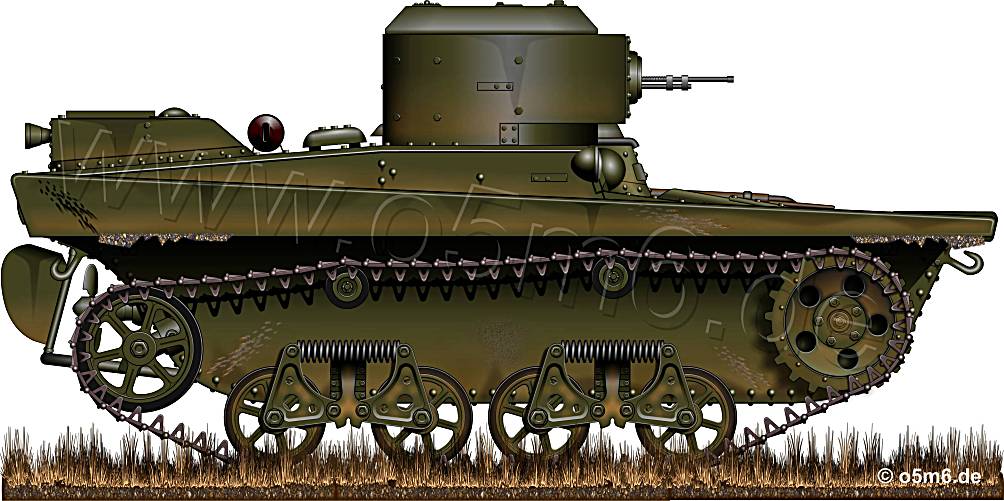
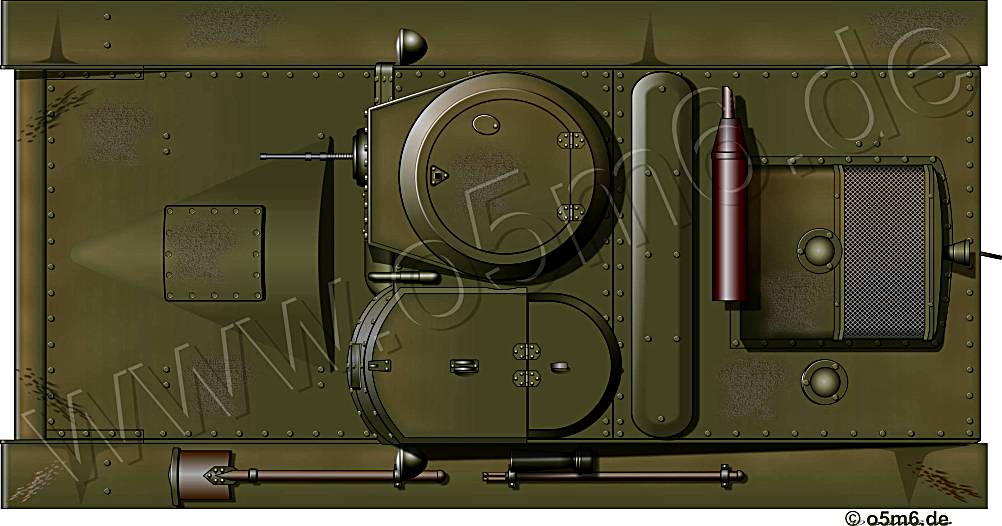
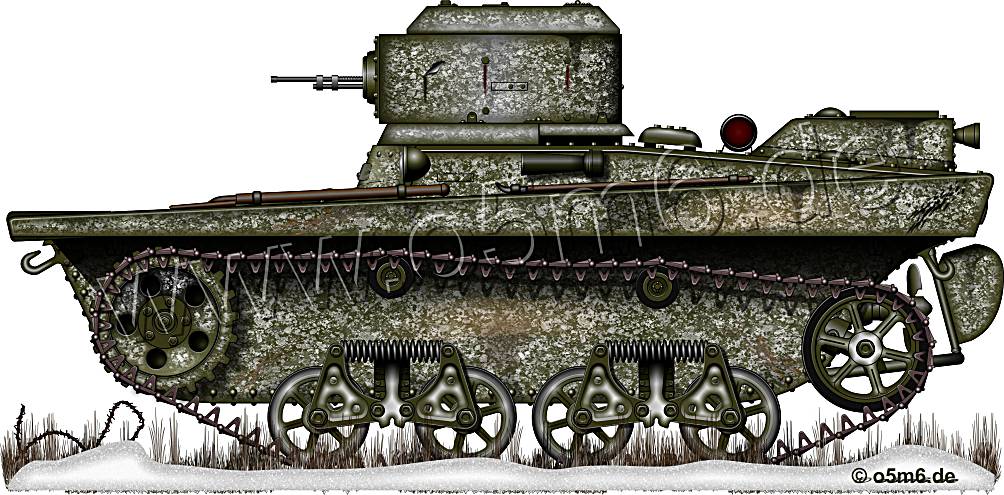
No publication in any form without the author's written permission.
Last Updated: October 16, 2008